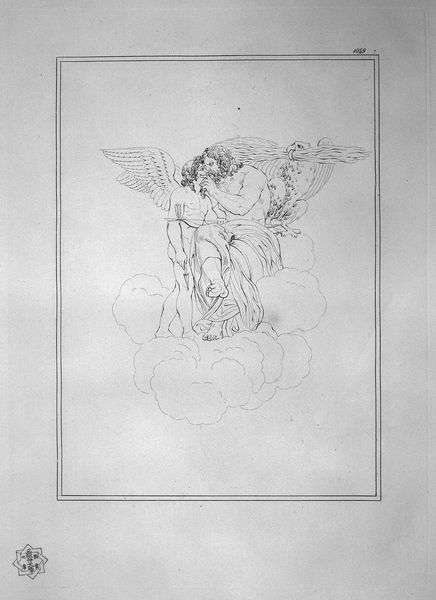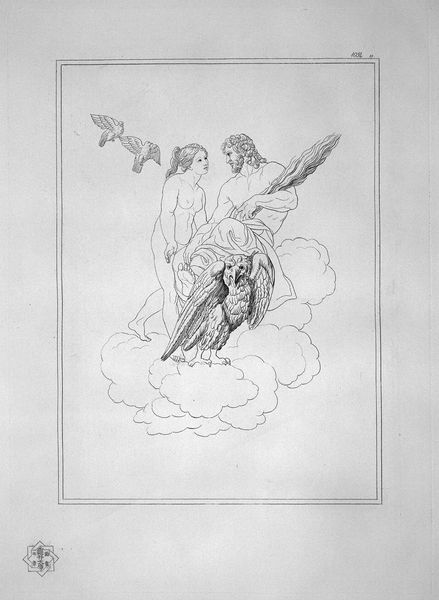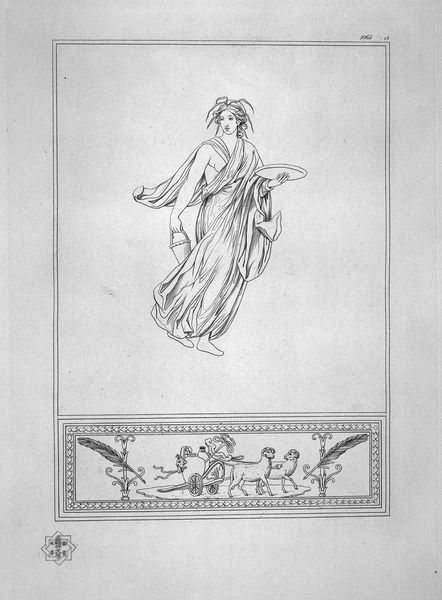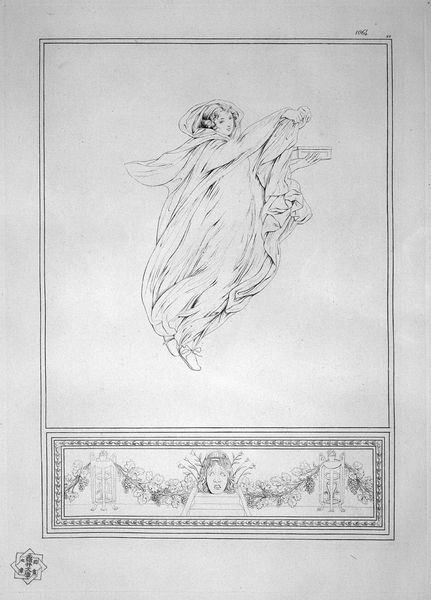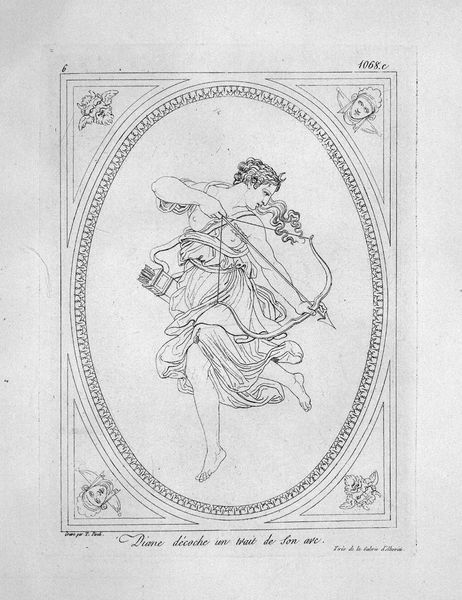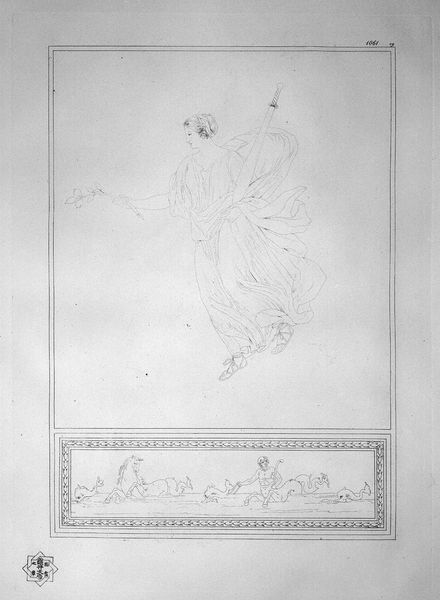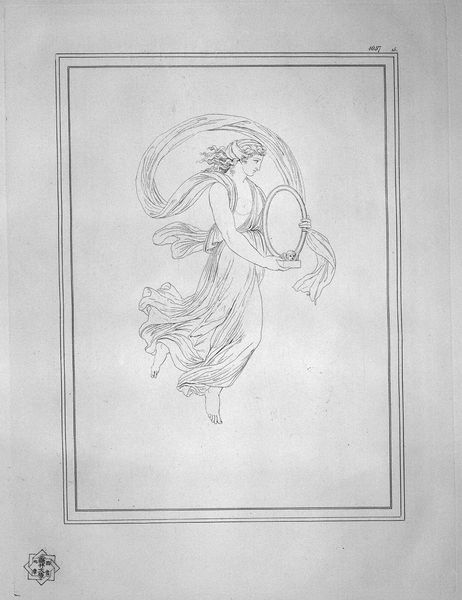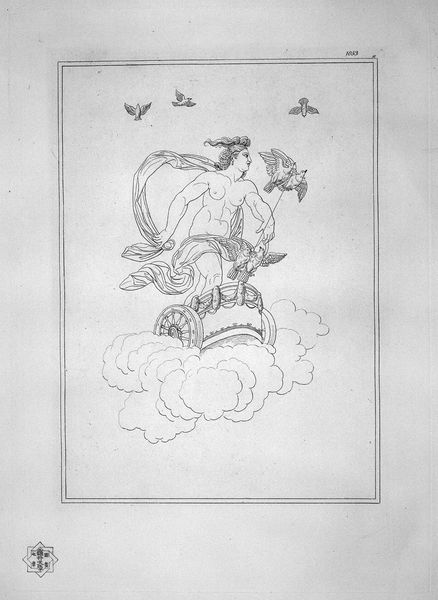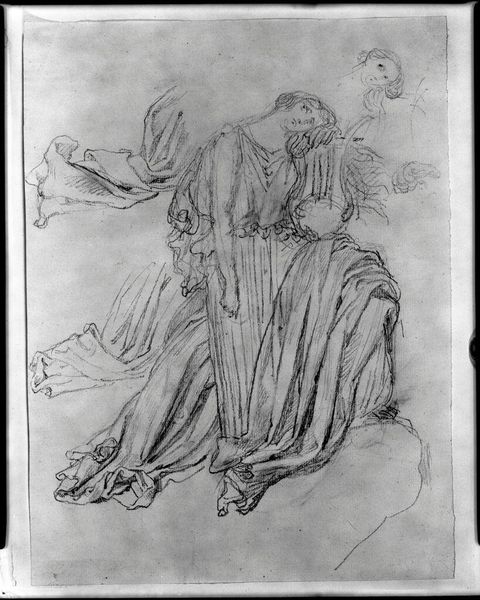
drawing, pencil
#
drawing
#
figuration
#
roman-mythology
#
romanticism
#
pencil
#
mythology
#
line
#
history-painting
Copyright: Public domain
Giovanni Battista Piranesi made this linear etching of Venus and Psyche sometime in the 18th century, using a metal plate, acid, and ink. The relatively simple materials belie the complex processes involved. Etching relies on the corrosive power of acid to bite lines into a prepared metal plate. The linear quality we see here results from carefully drawing through a protective wax coating, exposing the metal underneath. The plate is then submerged in acid, which eats away at the exposed lines. The longer the plate is etched, the deeper and darker those lines will appear when printed. Finally, the plate is inked, and the surface wiped clean, leaving ink only in the etched lines. High pressure is then applied to transfer the image to paper. Piranesi was deeply engaged with the circulation of images in his time. He was an artist-entrepreneur producing views of Rome for the Grand Tourist market, and his virtuoso manipulation of etching techniques allowed him to create evocative and reproducible images. These allowed the spread of certain aesthetics more widely than ever before, and helped shape perceptions of beauty, and of the Classical world. In this context, the value of the artwork lies not only in its aesthetic appeal but also in its role within systems of production, consumption, and cultural exchange.
Comments
No comments
Be the first to comment and join the conversation on the ultimate creative platform.


